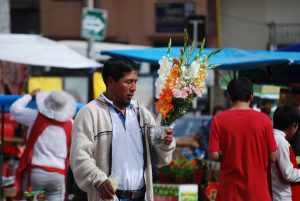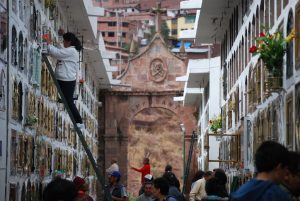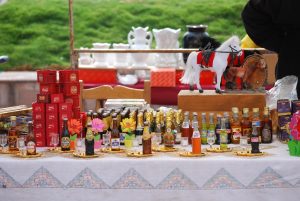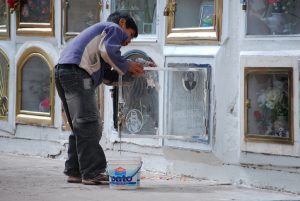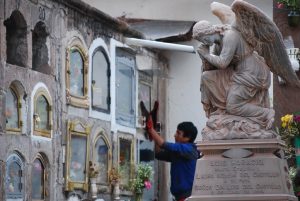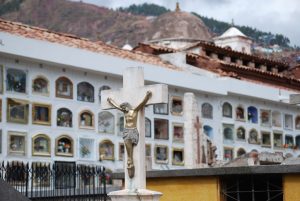Eat, Dance, and Sing with the Dead Today in Cuzco

In many parts of Peru people have the custom of going to the cemetery today as a family to spend time with their members who have died. Every year on the first days of November the dead are remembered by their families and friends who gather by their tombs where they had said “good bye” to converse, eat, drink, and dance with them.
Often the families will hire bands of musicians who go to the cemetery on this day. They will play huaynos–an indigenous Peruvian song form–as well as other genres that the person loved in life to bring pleasure to them and welcome them on this day. Often the day will turn into a feast of prayers, food, music, and dance between the living and the dead who still live in the hearts of their loved ones.
The cemeteries are filled with life and movement today. Not only do families come to visit with their loved ones who have passed on, but merchants seize the day to set up outside and offer flowers, food, and offerings of things the dead might like.
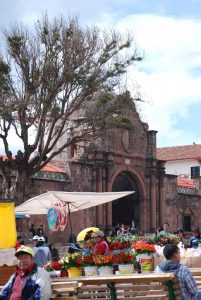
The traditional lechón, a symbolically important Cuzco dish, is one of the most demanded. It is sold with tamales, especially sweet tamales, and with moraya–a freeze dried potato that through processing in water is stripped of its dark color and ends up white. Other dishes based on pork are also offered.
And of course there are drinks. Chicha, beer, anisette liqueur, as well as others are present in this feast and are prepared for the living to share with the dead.

While people miss their dead, the tone of the day is one of happiness coming to drive away sadness. That is part of why the musicians are there standing by the tombs to offer their services. With the music of saxophone, harp, and violin, as well as cigarettes, coca leaves, masses and typical local dishes of food the mood becomes festive.
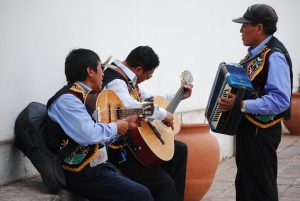
You can see all this in the Almudena and Huancaro cemeteries of our city.
With this feasting for their dead Peruvians celebrate the two part feast called All All Saints and All Souls of the Catholic calendar. For formal Catholics the first day is a celebration of the saints, known and un-known, while the second celebrates all the souls in purgatory. In many Catholic countries the feast has developed into something of a celebration of the dead and a remembrance by families of their deceased whether in the exact way envisioned by the Church or not.
Here though, it is called the Feast of the Living and the Feast of the Dead. It is a two day national holiday.
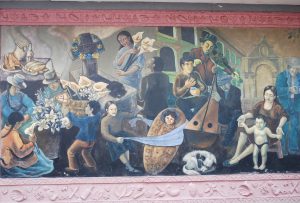
While Spanish Catholicism brought this feast to Peru in recognition of a bond between the living and the dead it draws on indigenous customs as well. The ancient cultures of Peru, as Guaman Poma notes, honored their dead with food and song.
The dates changed, however, as the ancient Peruvian custom joined with the Catholic in what is now a spiritually and emotionally charged two-day feast of the living and the dead.
